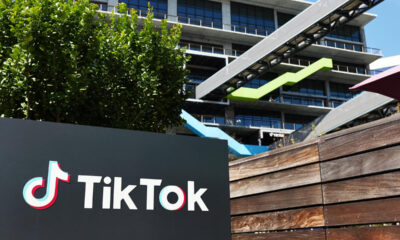Alation on Wednesday launched Alation Anywhere for Google Chrome, an extension of the vendor’s platform that enables customers to discover data and use it to inform decisions without leaving Chrome.
A 2022 study by the Harvard Business Review found that the average employee in a Fortune 500 company toggles between applications and websites 1,200 times per day, which adds up to four hours per week and five weeks out of the year spent context-switching.
Alation Anywhere addresses that wasted time by saving users from having to toggle between applications and the vendor’s environment. Before launching Alation Anywhere for Google Chrome, the vendor previously released extensions of its platform for Slack, Microsoft Teams, Excel and Google Sheets.
Given that Alation Anywhere for Google Chrome addresses time wasted switching between websites and the Alation environment and speeds access to Alation’s data catalog capabilities, it is a helpful addition to the vendor’s platform, according to Matt Aslett, an analyst at ISG’s Ventana Research.
“The primary goal of capabilities like Alation Anywhere is to accelerate data-driven decision-making,” he said. “It does this by facilitating access to governed and curated data from Alation Data Catalog via business productivity tools and applications. This reduces the need for context-switching, which can delay time to insight.”
Based in Redwood City, Calif., Alation is a data catalog specialist whose Data Intelligence Platform lets users integrate and organize data from disparate sources that can be used to train AI models as well as inform data products such as reports and dashboards.
Recently, with enterprise interest in developing AI models and applications surging — including developing generative AI — the vendor launched a new AI governance suite.
Extending Alation to the web
Toggling between applications is an unpleasant fact.
There’s one application for email, another for instant messaging and collaboration, still another for analyzing data and many more for such tasks as creating presentations, customer relations management and enterprise resource planning.
As the Harvard Business Review’s report noted, more than an entire month of employees’ work year is wasted by switching from one application to another.
Alation has taken steps to reduce some of the lost time by context switching with its initial Alation Anywhere extensions. But more than on Slack and Teams, and more than on Excel and Google Sheets, most applications are now based on the web, according to Stewart Bond, an analyst at IDC.
Chrome, meanwhile, is the most popular web browser. As a result, Alation Anywhere for Google Chrome addresses a need.
“The browser has become the interface from which most modern applications are accessed,” Bond said. “It takes away the need for people to toggle between the application being used in one tab, and Alation being used in another tab. It should save users time.”
But there’s more to extending Alation’s capabilities to the browser and other applications than just saving time, Bond continued.
Embedded analytics is a means of increasing the use of data to inform decisions.
By embedding analytics tools in common work applications, vendors, whether data catalog specialists such as Alation and Collibra or any other data management and analytics vendors, make it easier to consume data. When it’s right there, with no toggling necessary, employees are much more likely to use data as a tool than when they’re forced to seek it out.
“Extending Alation Anywhere to Google Chrome is going to deliver intelligence about data to users in their daily flow of work, in context to what they are doing within applications running in the browser,” Bond said. “I suspect [that will] increase effectiveness — having that intelligence available in context will be very useful when building analytical models and reviewing model results.”
Diby Malakar, Alation’s vice president of product management, similarly noted the importance of embedded analytics.
“Embedding analytics and data management directly into everyday tools is essential for streamlining workflows and reducing friction,” he said. “With users accessing data from so many different applications and tools, [embedded analytics and data management] simplify access to trusted data and make it easier for users to unlock data-driven insights.”
Regarding the impetus for adding the Alation Anywhere extensions, including the newest for Google Chrome, Malakar added that customer feedback and the vendor’s own monitoring of industry trends both played roles.
“[They are] a response to our commitment to meeting users within their workflows and in the tools they use most,” he said. “With the modern data stack continuously evolving, especially with AI embedding more deeply in workflows, our goal is to ensure data intelligence is always available where it drives the most value.”
Key features of Alation Anywhere for Google Chrome include the following, according to the vendor:
- Streamlined data discovery enabled by Intelligent Search, a semantic-based search engine that employs AI to help users find relevant data for informing decisions and actions.
- Metadata preview, a tool aimed at providing users with context about their data by automatically showing users previews of data assets in Snowflake’s Snowsight, a web-based interface, and Microsoft Power BI dashboards alongside Alation’s metadata.
- Access within Chrome to standardized organizational terms in the Alation glossary to maintain consistency across reports, presentations and other assets.
Combined, the capabilities included in Alation’s extension for Google Chrome, following the launches of similar extensions for other applications, further Alation’s effort to improve access to data across organizations, according to Aslett.
“The release illustrates the ongoing evolution of the Alation strategy to provide increased access to governed and curated data throughout an enterprise,” he said.
However, he noted that Alation is not alone among data integration vendors in extending its capabilities the browser. Informatica, Collibra, Qlik, DataGalaxy and Atlan provide browser-based access to their data catalogs, he said.
Going forward
With Alation Anywhere for Google Chrome now available, the vendor’s product development plans over the next year or so will continue to focus on improving its enablement of both technical and non-technical users to discover and curate the trusted data needed to inform decisions, according to Malakar.
That includes enterprise development of AI models and applications.
“As AI and data initiatives become central to enterprises, the demand for real-time, accessible, and reliable data will only increase,” Malakar said. “Alation is committed to evolving our platform to meet these needs … backed by the data they trust.”
Bond, meanwhile, suggested that Alation needs to find ways to differentiate itself from its competition.
Alation doesn’t just compete with other data integration and data catalog specialists such as Collibra and Informatica. Tech giants AWS, Google Cloud and Microsoft also offer data catalogs as part of their larger data management and analytics offerings.
While a browser-based extension is useful for Alation customers, it won’t help the vendor stand out given that numerous other vendors provide similar extensions for their own users. Conversely, the vendor’s recent launch of an AI governance suite not only serves a growing need but is also somewhat unique to date with AI only recently gaining enough widespread use in the enterprise to necessitate governance.
“Alation, not unlike other data intelligence vendors, needs to focus on unique differentiation as an enterprise data intelligence solution as they face competition from data platform vendors and hyperscale cloud vendors also building out data intelligence capabilities,” Bond said.
Eric Avidon is a senior news writer for TechTarget Editorial and a journalist with more than 25 years of experience. He covers analytics and data management.











































































































































































You must be logged in to post a comment Login